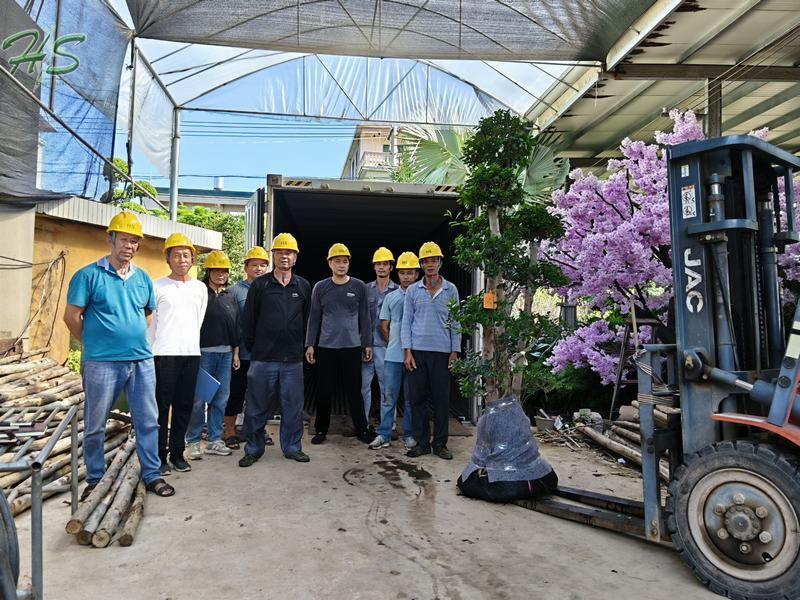
 contrast between its powerful, aged form and its delicate, vibrant life.
contrast between its powerful, aged form and its delicate, vibrant life.Item NO.:
HSFGPayment:
T/TProduct Origin:
ChinaShipping Port:
Xiamen portLead Time:
7-10day
Caring for Your Ficus microcarpa
The Ficus microcarpa, commonly known as the Green Island Fig, is a popular and resilient houseplant prized for its dense, glossy green foliage and compact growth habit. With proper care, it can thrive for many years, bringing a touch of lush elegance to your indoor space.
1. Light:
This plant prefers bright, indirect light. A spot near an east or south-facing window (with a sheer curtain for filtration) is ideal. It can tolerate lower light conditions but may become leggy and drop leaves. Avoid prolonged exposure to harsh, direct afternoon sun, which can scorch its leaves.
2. Watering:
Watering is a crucial aspect of care. Water thoroughly when the top inch (2.5 cm) of soil feels dry to the touch. Allow excess water to drain completely from the pot's bottom; never let the plant sit in standing water, as this leads to root rot. Reduce watering frequency in the winter when growth slows.
3. Soil and Potting:
Use a well-draining, peat-based potting mix. A standard indoor plant mix amended with perlite or orchid bark works well. Repot every 1-2 years in spring if the plant has become root-bound.
4. Temperature and Humidity:
As a tropical plant, it enjoys warmth and humidity. Maintain room temperatures between 65°F and 75°F (18°C - 24°C). Protect it from cold drafts and sudden temperature drops. While it adapts to average household humidity, it will appreciate occasional misting, a pebble tray, or a nearby humidifier, especially in dry environments.
5. Fertilizing:
Feed your ficus with a balanced, water-soluble fertilizer diluted to half strength every 4-6 weeks during the active growing season (spring and summer). There is no need to fertilize in the fall and winter.
6. Pruning and Cleaning:
Regular pruning helps maintain a desired shape and encourages bushier growth. Prune in spring or early summer using clean, sharp shears. Wipe the leaves with a damp cloth occasionally to remove dust, which allows them to photosynthesize efficiently.
Key Tip: The Ficus microcarpa is known to be sensitive to change. It may drop some leaves when moved to a new location due to shifts in light or temperature. Don't be alarmed; simply provide consistent care, and it will soon recover with new growth.
With its forgiving nature and beautiful appearance, the Ficus microcarpa is a wonderful choice for both novice and experienced plant enthusiasts.